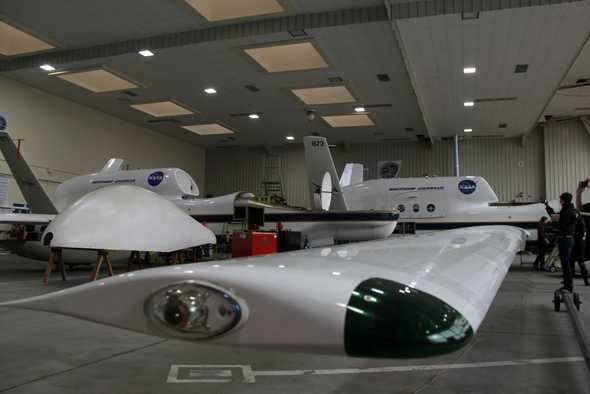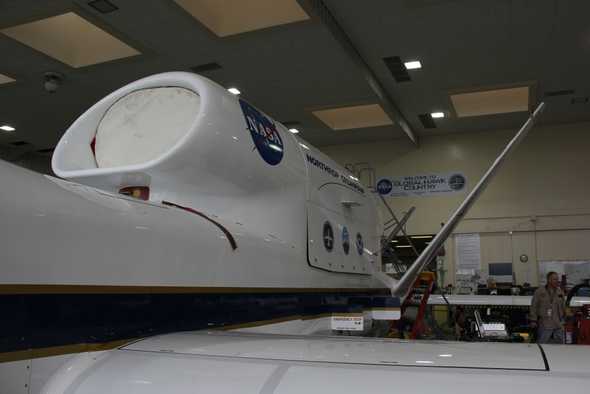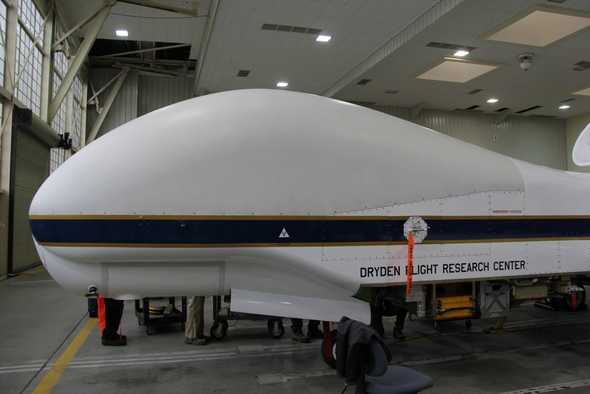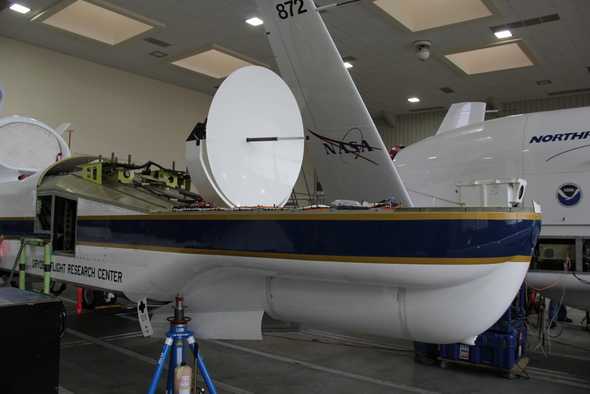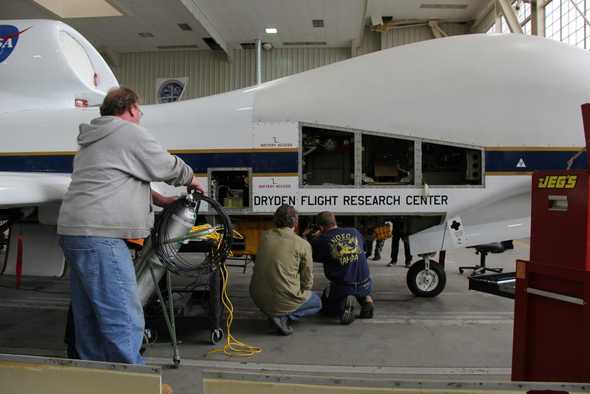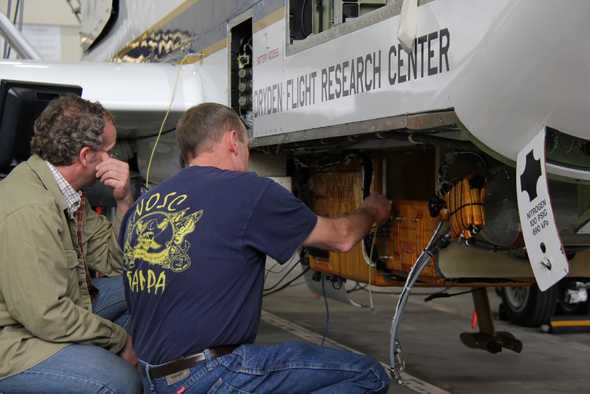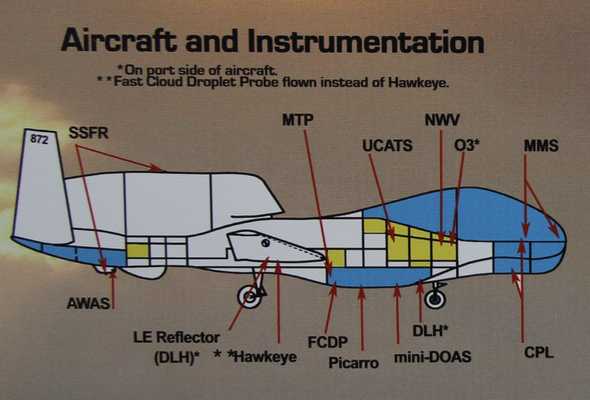Global Hawk
Global Hawk Project Manager Chris Naftel and Northrop Grumman Global Hawk pilots Kent Fuller and Stephen Sipprell talked with participants at the NASA Airborne Earth Science Event about the Global Hawk and its capabilities. Global Hawk was originally developed for the Air Force. They built seven demonstrators that were tested at Edwards Air Force Base. When they were ready to build production airplanes, the demonstrators became available for other uses. NASA requested that the Air Force give them the excess airplanes about five years ago. The 872 was the sixth airplane built. The 871 is the first Global Hawk built. It first flew in 1998.
NASA uses the Global Hawk to fly science missions. Because there is no pilot onboard the aircraft, it can be flown for a long period of time. It has flown for 29 hours and is believed able to fly even longer. It can fly about 11,000 nautical miles on one tank. To put this into perspective, that is equivalent to two round trips from Edwards Air Force Base in Southern California to New York, never having to refuel or land.
This is possible because the Global Hawk was built mainly with composite materials making it a lighter weight airplane. The 116-foot wingspan is mostly fuel tank. Half the fuel is located in the wings. The other half is located in two fuel tanks in the fuselage. Over half of its weight at takeoff is fuel. The engine is a very efficient Rolls-Royce engine, burning 81 gallons per hour. It can reach an altitude of 50,000 feet in about forty minutes, usually within the restricted airspace over Edwards Air Force Base.
The Global Hawk has flown up to the North Pole three times, flown over hurricanes in the Atlantic Ocean, and flown up to an altitude of 65,000 feet. With instruments on board, NASA can see through the hurricane all the way down to the ocean, essentially doing a CAT scan of a hurricane. Last summer, they tried out a new ground station at Wallops Airfield Facility in Virginia and flew eight missions over hurricanes. This new ground station allows more flight time over the Atlantic to study weather phenomenons.
NASA has a partnership with Northrop Grumman, the manufacturer of the Global Hawk. Half the crew is from NASA, the other half is from Northrop Grumman.
A pilot, co-pilot and several support staff control the airplane remotely. Typically, three sets of pilots will fly during a long mission. The ground station talks with the aircraft through satellite links or UHF radio when they have a direct line of sight. When out of sight, they use satellites links including the Inmarsat. There is a voice radio on board that pilots talk through the satellite to the airplane, and the airplane transmits their voice to Air Traffic Control. ATC may not even realize the aircraft is unmanned because they are hearing the pilot’s voice coming from the airplane. The front part of the aircraft contains a 48-inch satellite dish that is used to beam the payload data to a satellite that is then sent back to the control center in real-time.
The Global Hawk is autonomous, which means that a mission plan is loaded on the computer prior to takeoff. In theory, the aircraft can fly a mission without any help from humans. If communication is lost between controllers and the airplane, it can sense that and be able to fly home and land safely by itself.
Very little maintenance is required between flights. When it finishes a mission, systems are checked but it is common that nothing has to be done. Most of the work performed is on the science instruments that require work before and after a mission.
Instruments on board include: Cloud Physics Lidar (CPL), Advanced Whole Air Sampler (AWAS), UAS Chromatograph for Tracers (UCATS), NOAA Ozone, Picarro Cavity Ringdown Spectrometer, NOAA TDL Water Vapor, Diode Laser Hygrometer (DLH), Hawkeye, Solar, Infared Radiometers, Meteorological Measurement System (MMS), Microwave Temperature Profiler (MTP), and Absorption Spectrometer (DOAS).

